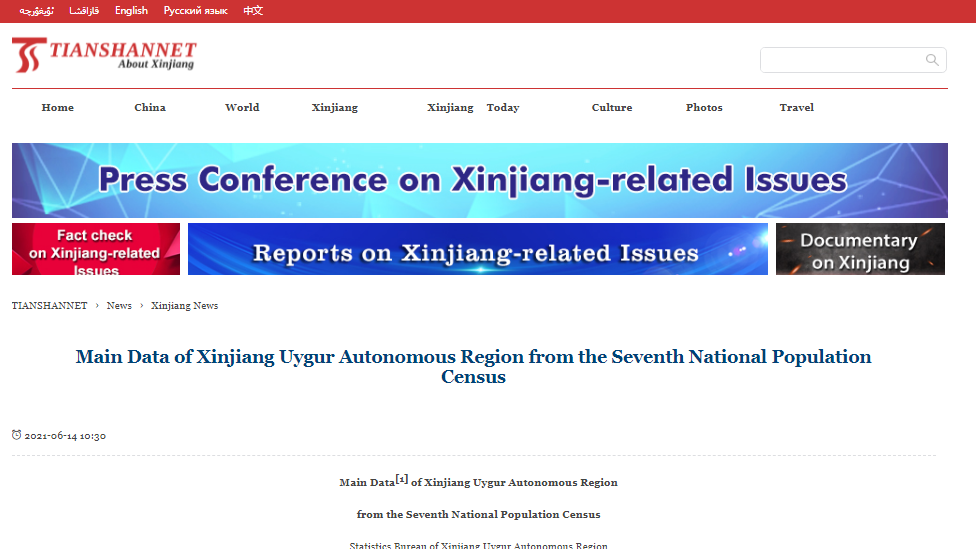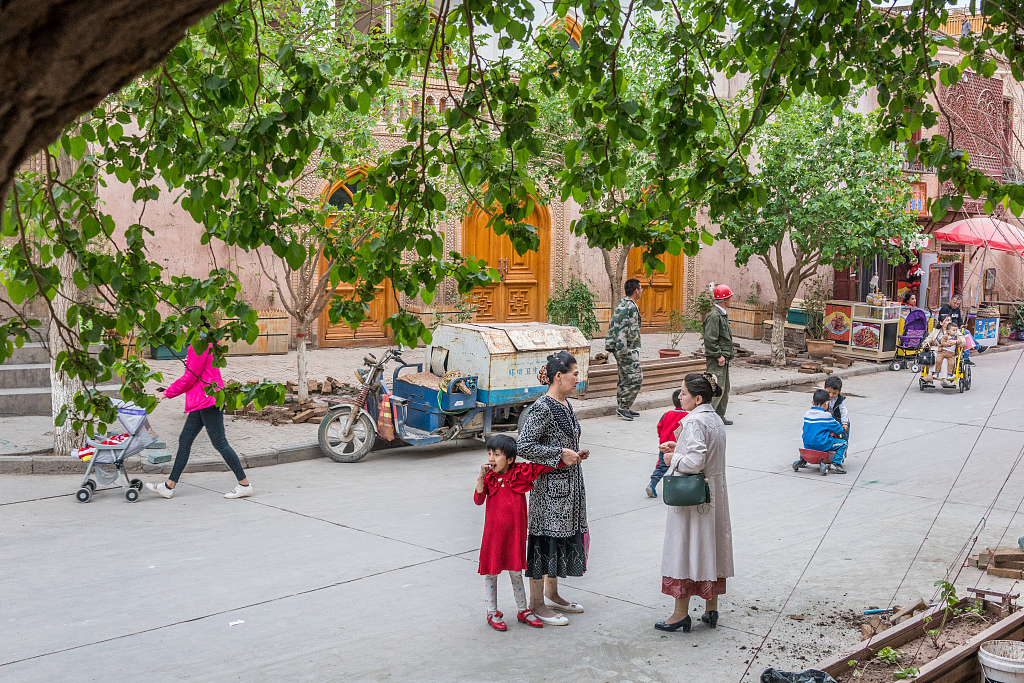
A screenshot of Tianshannet
A screenshot of Tianshannet
Editor's note: Keith Lamb is a University of Oxford graduate with an MSc degree in Contemporary Chinese Studies. His primary research interests are China's international relations and "socialism with Chinese characteristics." The article reflects the author's opinions and not necessarily the views of CGTN.
According to a recently released report by the Statistics Bureau of Xinjiang Uygur Autonomous Region, Xinjiang's population has risen precipitously. Figures from the Seventh National Population Census, taken in 2020, show that compared with the previous 2010 census, Xinjiang's population grew from just under 22 million to nearly 26 million.
This means that this sparsely populated region went from being the 25th to the 21st most populated province in China. Population growth from birth rates has come predominantly from Xinjiang's ethnic minorities.
No doubt, the China bashers will resort to the usual claim of official statistical manipulation. However, they invalidate their presumptions by claiming official statistics when it suits themselves.
Certainly, looking for statistical bias and manipulation is crucial but quite frankly the whole "we can't trust China's statistics" argument has been exaggerated to the extent that the West has become blind to China's reality.
For example, over the last decade, there were various claims that China's official GDP figures were false. While this call may have eased the bruised egos of Western states, it didn't change the observed facts on the ground like a booming retail scene, an increase in outward bound tourist and education spending, and rapid infrastructure development.
To be fair, China has on a few occasions revised its statistics when it has found inaccuracies. For example, the National Bureau of Statistics last revised China's 2018 GDP in 2019.
However, this modification merely supports my point that China needs accurate figures. After all, it is only through accurate data collection that China can set policy that correctly plans for the future. For all governments this is important, but for China's governing system geared up to long-term comprehensive planning, this is even more critical.
As for the Seventh National Population Census, which captured the state of China's population, as of November 1, 2020, it was considered more accurate than previous censuses. This is because due to technological advancements it adopted in real-time data collection methods which decreased errors that could occur due to intermediate links in the collection of data.
The census shows that the 18.52 percent population growth rate in Xinjiang over the last 10 years is much higher than the nationwide average of 5.38 percent. This rapid growth is primarily due to higher birth rates in Xinjiang's ethnic minorities as well as internal migration.
Over the last 10 years, the ethnic minority population, of which the Uygur ethnicity accounts for 77.85 percent, increased by 1.87 million. This is in contrast with the growth of the Han population, due to new births, which stands at 226,000.

A street scene from Kashgar, Xinjiang Uygur Autonomous Region, northwest China, April 8, 2019. /VCG
A street scene from Kashgar, Xinjiang Uygur Autonomous Region, northwest China, April 8, 2019. /VCG
Obviously, these figures fly in the face of genocidal narratives. Indeed, the Han who live primarily in cities have up until recently been subject to the one-child policy while the ethnic minorities who live in the countryside have always been permitted four children.
Rarely noted in the Western media, which homogenizes the Chinese nation, is the sheer diversity of ethnicities that are spread across China. All have seen increases in their populations with a national ethnic minority growth rate of 10.26 percent. This ethnic minority population growth has been even more rapid in Xinjiang, at 14.27 percent, while the Uygur population has increased by 16.2 percent.
In Xinjiang, increases in the Han ethnicity has been primarily due to immigration which has led to 1.95 million new arrivals over the last 10 years. Invariably, China's internal migration patterns will be disparaged by some in the West who have little idea of China's developmental reality.
What internal migration into Xinjiang points to is firstly a peace dividend which is essential for economic development. During the time of heightened terrorism, few people were willing to move to Xinjiang. Back then, I remember the fear expressed in the Chinese press concerning Xinjiang's ability to attract the necessary talents needed to develop the gigantic province. With the terrorist threat dealt with, Chinese citizens once again feel safe enough to move Westwards.
Secondly, westward migration points to China finally carrying out its policy of even development. Now Xinjiang is experiencing the much-needed economic revival that the eastern provinces experienced when China opened up to the world. Crucially, development in both eastern and western China could not have come about without attracting the needed labor force and developing the skills of those already there.
When it comes to the development of Xinjiang, as the furthest western region in China, it occupies not only a special place in China's own development but global development too. Its development represents the goal of even development guaranteed by China's socialist system.
For the world, it is the gateway to numerous Belt and Road developmental projects which seek to eradicate poverty in Central Asia and beyond. With Xinjiang's key location on a new silk road, it is only set to become a more bustling trade hub that will attract talent from not only around China but also Central Asia and the rest of the world too.
(If you want to contribute and have specific expertise, please contact us at opinions@cgtn.com.)

